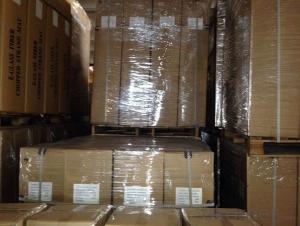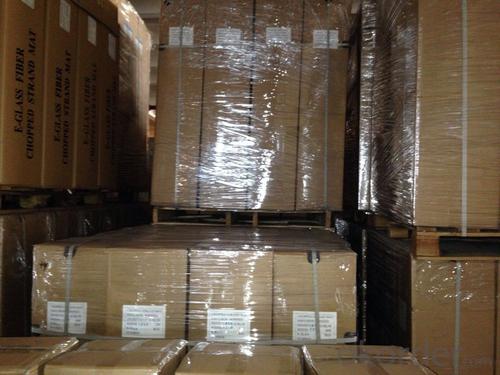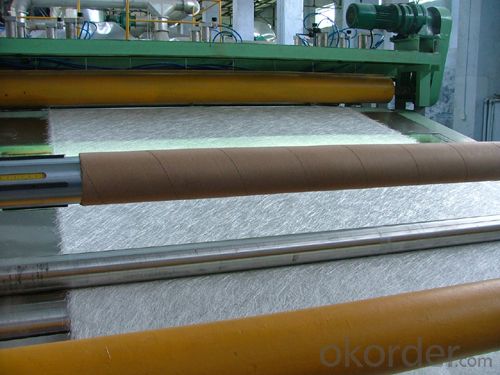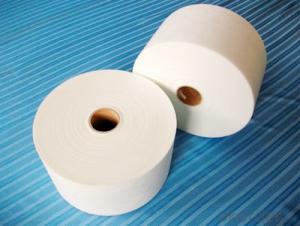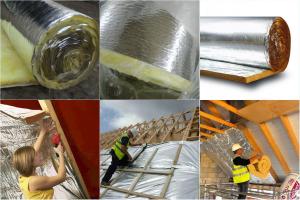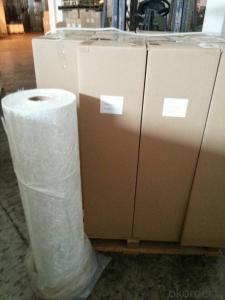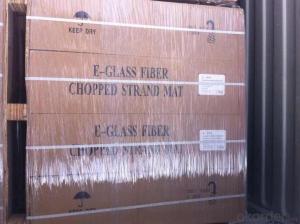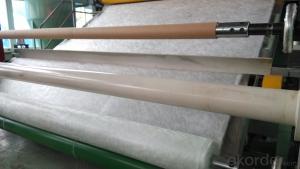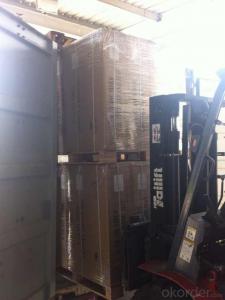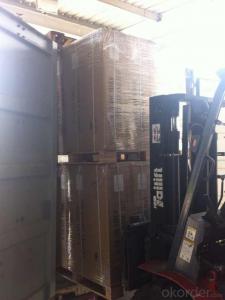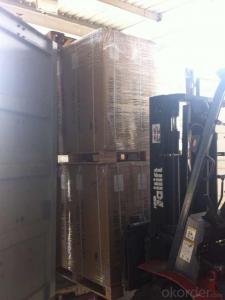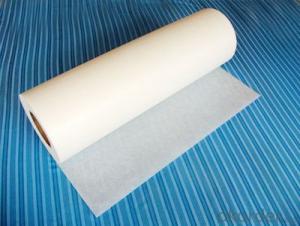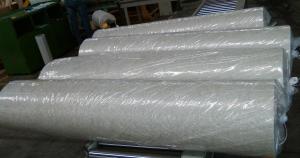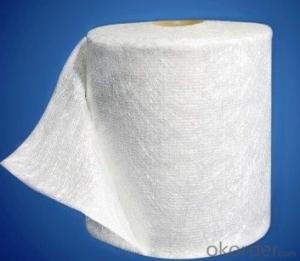Fiberglass Mat Tissue Emulsion Binder E Glass Chopped Strand Mat
- Loading Port:
- Shanghai
- Payment Terms:
- TT OR LC
- Min Order Qty:
- 1000 kg
- Supply Capability:
- 100000 kg/month
OKorder Service Pledge
OKorder Financial Service
You Might Also Like
Emulsion Binder E glass Chopped Strand Mat
Product description of Fiber Glass Powder Emulsion Chopped Strand Mat
Glass Fiber Emulsion Binder Chopped Strand Mat is an unwoven fabrics consisting of randomly distributed chopped strands held together with Emulsion Binder.
Emulsion Binder Chopped Strand Mats are compatible with unsaturated polyester, vinyl ester, phenol and epoxy resins.
Specification of Emulsion Binder E-Glass Chopped Strand Mat
Property | Glass type | Weight(g/m2) | Width 200~3300 | Roll Weight | Moisture Content /% | Combustible Content /% | Breakage Strength /N |
Test Method | GB/T 1549 | ISO3374:2000 | ISO3374 | GB/T17470-1998 | ISO3344:1997 | ISO1887:1995 | ISO3342 |
EMC 80 | E-GLASS | 80±16 | ±5 | 6~50 | <0.2< span=""> | 13.6±0.35 | ≥200 |
EMC 100 | E-GLASS | 100±10 | ±5 | 6~65 | <0.2< span=""> | 9.5±0.35 | ≥170 |
EMC 150 | E-GLASS | 150±15 | ±5 | 6~97 | <0.2< span=""> | 8.0±0.35 | ≥40 |
EMC 225 | E-GLASS | 225±22 | ±5 | 6~150 | <0.2< span=""> | 5.0±0.6 | ≥60 |
EMC 300 | E-GLASS | 300±30 | ±5 | 6~180 | <0.2< span=""> | 4.0±0.6 | ≥90 |
EMC 450 | E-GLASS | 450±45 | ±5 | 6~180 | <0.2< span=""> | 3.8±0.6 | ≥120 |
EMC 600 | E-GLASS | 600±60 | ±5 | 6~240 | <0.2< span=""> | 3.6±0.6 | ≥150 |
EMC 900 | E-GLASS | 900±90 | ±5 | 6~190 | <0.2< span=""> | 3.4±0.6 | ≥180 |
Characteristics of Emulsion Binder E Glass Chopped Strand Mat
1.Uniform density ensures consistent fiberglass content and mechanical properties of the composites products;
2.Uniform powder distribution ensures good mat integrity, little loose fibers and small roll diameter;
3, The composite products have high dry and wet tensile strength and good transparency.
4, Optional for high strength with stiff mat for panel laminating and midle strength with soft mat for hand layup.
Package:
1, the Mat roll will be wrapped in PVC/PE film, then packed with carton boxes;
2, Vertically placed on bottom pallets by:
4 rolls*4 rolls or 4 rolls* 5rolls
Horizontally placed on upper pallets by:
3 rolls*4 rolls
3, the whole pallet will be fasten by PVC strips;
4, the whole pallets will be wrapped by strentchable PE film.
FAQ:
1. What is your MOQ?
Our MOQ is one pallet.
2. Can you provide sample?
Yes, we can offer free sample for you.
3. Payment terms?
We can accept L/C, T/T etc.
4. Do you offer OEM service?
Yes, we can print customers’ logo on the packaging;
And the size and specification can be produced and design according to your demand.
5. What is the Production Lead Time?
1 *40HQ each day.
6. What kind of standard of the mat?
ISO9001-2008
GS Certificate (special for automotive industries)
DNV Certificate (Special for Marine)
LIyod
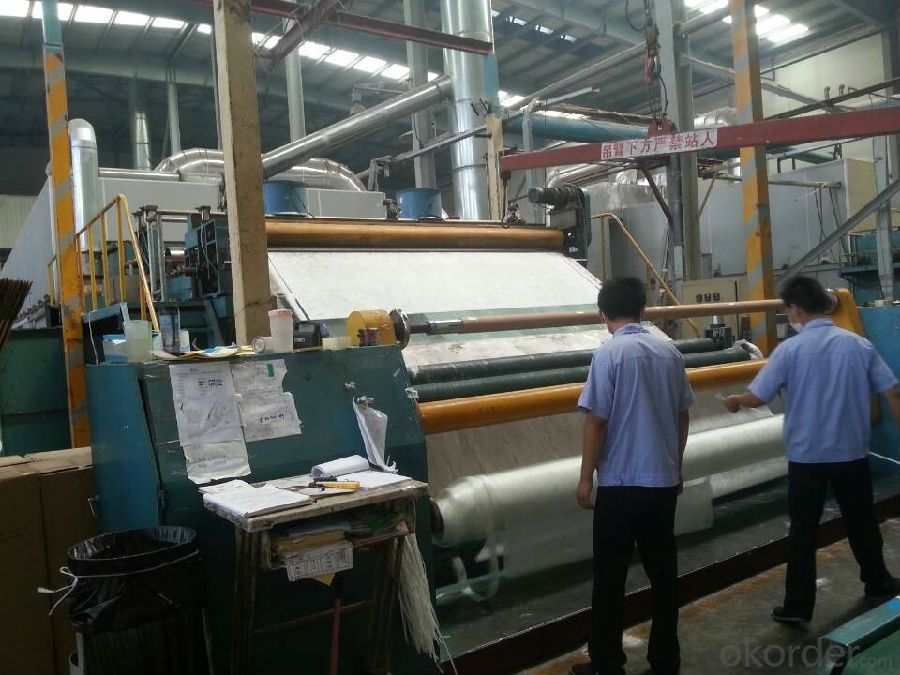
- Q: Can fiberglass mat tissue be used for windbreak panels?
- Windbreak panels can utilize fiberglass mat tissue, which functions as a lightweight and flexible material. This material is commonly utilized in insulation, reinforcement, and structural support applications. It is recognized for its durability, high strength-to-weight ratio, and ability to withstand various weather and environmental conditions. By incorporating fiberglass mat tissue into windbreak panels, additional reinforcement and stability are provided. This reinforcement allows the panels to endure strong winds without experiencing damage or breakage, rendering fiberglass mat tissue an effective choice for windbreak panels. Furthermore, fiberglass mat tissue possesses exceptional thermal and acoustic insulation properties. This feature contributes to the reduction of noise and regulation of temperature within windbreak panels, thus creating a more comfortable and protected environment. Additionally, this material is fire-resistant, ensuring the safety of windbreak panels. In summary, considering its strength, durability, insulation properties, and resistance to environmental conditions, fiberglass mat tissue proves to be a suitable and dependable material for windbreak panels.
- Q: What is the typical width of fiberglass mat tissue rolls?
- The typical width of fiberglass mat tissue rolls is around 1 meter or 3 feet.
- Q: Can fiberglass mat tissue be used for HVAC ducting?
- HVAC ducting can indeed utilize fiberglass mat tissue. This lightweight substance is formed by bonding glass fibers with resin. Its exceptional thermal insulation qualities render it suitable for HVAC systems that prioritize temperature control. Moreover, fiberglass mat tissue boasts resistance against moisture and chemicals, assuring long-lasting durability in ducting applications. Its installation is hassle-free, and it can be tailored to fit varied duct sizes and shapes. All in all, fiberglass mat tissue emerges as a dependable and effective option for HVAC ducting.
- Q: Can fiberglass mat tissue be used for pipe wrapping?
- Yes, fiberglass mat tissue can be used for pipe wrapping. Fiberglass mat tissue is a lightweight and flexible material that is commonly used for reinforcing and protecting various structures, including pipes. It is designed to provide strength and durability to the pipes, making them more resistant to damage and corrosion. The fiberglass mat tissue can be easily wrapped around the pipe, creating a protective layer that helps to prevent leaks and extend the lifespan of the pipe. Additionally, fiberglass mat tissue is also known for its excellent insulation properties, which can help to maintain the temperature of the contents flowing through the pipe. Overall, fiberglass mat tissue is a suitable material for pipe wrapping and is commonly used in various industries for this purpose.
- Q: How does the density of fiberglass mat tissue impact its performance?
- The density of fiberglass mat tissue directly affects its performance. Higher density mat tissue is typically stronger and more durable, providing better structural support and resistance to impact. On the other hand, lower density mat tissue is lighter and more flexible, making it suitable for applications where weight and flexibility are important factors. Ultimately, the density of fiberglass mat tissue plays a crucial role in determining its strength, flexibility, and overall performance.
- Q: Is fiberglass mat tissue resistant to solvents?
- Yes, fiberglass mat tissue is resistant to solvents. Fiberglass mat tissue is made from woven fiberglass fibers that are then coated with a binder. This binder provides a protective layer that makes the tissue resistant to solvents. Solvents are typically used to dissolve, thin, or clean materials, and they can potentially deteriorate or damage certain materials. However, fiberglass mat tissue is specifically designed to withstand the effects of solvents, making it a reliable choice for applications where exposure to solvents is expected.
- Q: What is the shelf life of fiberglass mat tissue?
- The shelf life of fiberglass mat tissue can vary depending on several factors such as storage conditions, packaging, and the specific manufacturer's recommendations. Generally, fiberglass mat tissue can have a shelf life of around one to two years if stored in a cool, dry place and unopened. However, it is important to note that over time, the material may degrade or lose its physical properties, which can affect its performance and suitability for use. Therefore, it is advisable to always check the manufacturer's guidelines or consult with them directly for the most accurate information regarding the shelf life of a particular fiberglass mat tissue product.
- Q: Can fiberglass mat tissue be used for composite panel manufacturing?
- Composite panels can be manufactured using fiberglass mat tissue, a thin and lightweight material composed of randomly oriented fiberglass strands bonded with a binder. This material is commonly employed as a reinforcement in composite manufacturing processes. In composite panel manufacturing, fiberglass mat tissue is typically mixed with other materials such as resin and a core material. This combination results in a robust and long-lasting panel. The mat tissue reinforces the panel, ensuring the distribution of loads and preventing cracking or delamination. Fiberglass mat tissue is renowned for its exceptional tensile strength, dimensional stability, and resistance to chemicals. These qualities make it highly suitable for use in composite panel manufacturing across various industries, including construction, transportation, marine, and aerospace. In summary, fiberglass mat tissue is a versatile and efficient material that can be effectively utilized in the production of composite panels. Its properties and characteristics make it a dependable choice for creating sturdy and enduring panels for diverse applications.
- Q: How is fiberglass mat tissue different from fiberglass cloth?
- Fiberglass mat tissue and fiberglass cloth, despite being woven glass fiber materials, exhibit distinct dissimilarities. Fiberglass mat tissue, an unwoven substance, comprises glass fibers randomly arranged and held together by a binding agent. It predominantly serves as a reinforcement layer in composite materials like fiberglass reinforced plastic (FRP) and fiberglass reinforced concrete (FRC). The random fiber orientation enhances the composite structure's robustness and stability. Notably, fiberglass mat tissue finds widespread usage in applications necessitating strength and rigidity, such as boat hulls or automotive components. In contrast, fiberglass cloth, a woven material, is created by interlacing glass fibers in a specific pattern. It is commonly employed in situations where flexibility and conformability are essential, such as the construction of surfboards or within the aerospace industry. By allowing precise and controlled fiber placement, fiberglass cloth facilitates the production of intricate shapes and attains a superior level of detail in the final product. Ultimately, the primary disparity between fiberglass mat tissue and fiberglass cloth lies in their structural characteristics and intended applications. While fiberglass mat tissue offers strength and stability, fiberglass cloth provides flexibility and conformability. The selection between these materials hinges on the project's specific requirements and the desired outcome.
- Q: Can fiberglass mat tissue be used for ballistic protection?
- Fiberglass mat tissue can be used for ballistic protection to some extent, but it may not offer the same level of protection as other materials specifically designed for this purpose. Fiberglass mat tissue is typically used in applications such as insulation, reinforcement, and fire resistance due to its high strength and heat resistance properties. However, when it comes to ballistic protection, there are more specialized materials available that are specifically engineered to withstand the impact of bullets or other projectiles. These materials often include aramid fibers (such as Kevlar) or ultra-high-molecular-weight polyethylene fibers (such as Dyneema) which are much more effective in providing superior ballistic protection. If ballistic protection is the primary concern, it is recommended to choose materials specifically designed for this purpose rather than relying solely on fiberglass mat tissue.
Send your message to us
Fiberglass Mat Tissue Emulsion Binder E Glass Chopped Strand Mat
- Loading Port:
- Shanghai
- Payment Terms:
- TT OR LC
- Min Order Qty:
- 1000 kg
- Supply Capability:
- 100000 kg/month
OKorder Service Pledge
OKorder Financial Service
Similar products
Hot products
Hot Searches
Related keywords
